
 |
||||
|
||||
Technologies on Display
A4 - Virtual Acupuncture
Traditionally, acupuncture students have to practice on real patients, which may risk the health of patients. This project aims at developing an intelligent virtual environment for Chinese acupuncture learning and training using state-of-the-art virtual reality technology. Students can learn and practice acupuncture in the 3D interactive virtual environment that supports force feedback interface for needle insertion. By so doing, students not only ˇ§seeˇ¨ but also ˇ§touchˇ¨ the virtual patient. With the high performance computers, highly informative and flexible visualization of acupuncture points of various related meridian and collateral can be highlighted to guide the students during training.
Applications
- Complete 3D acupuncture atlas
- Digital human modeling and research
- Acupuncture education and training
Features
- 3D interactive and realistic virtual environment
- Acupuncture practice with realistic, bi-directional force feedback
- Layer by layer anatomical visualization
- Multiple learning modes to facilitate flexible and efficient learning
Website
http://www.cse.cuhk.edu.hk/~crc/
Principal Investigator
Prof. P. A. Heng
Department of Computer Science and Engineering
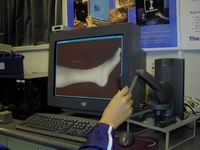
The system tracks the virtual needle and provides force feedback through the
PhanToM Desktop. We model the force during acupuncture as a bi-directional
force.
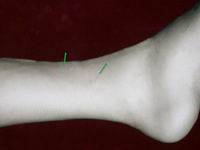
A screen shot showing how needles are inserted on the virtual leg.
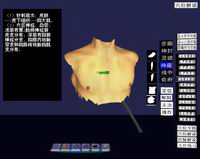
User can make use of virtual pointer to select interested meridian and
acupuncture point from the 3D menus.
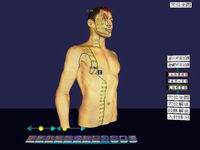
User can also visualize the flow of an interested meridian. All acupuncture
points on this meridian are then shown.
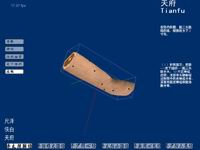
Locating acupuncture point on the skin surface.
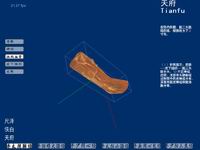
The same acupuncture point visualized with the outermost skin surface
removed.
ˇ@

